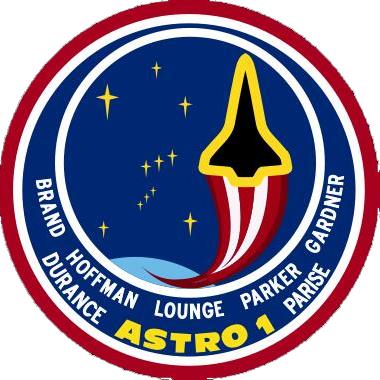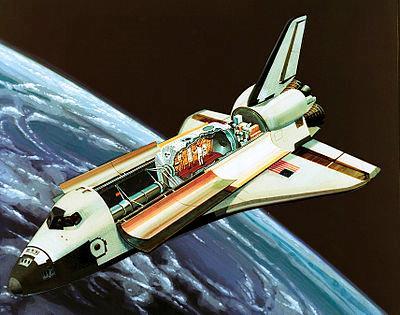Mike Lounge
Spacelab Space Missions
Spacelab 008 - STS-35
Mission Name: ASTRO-1
Astronauts:
Command Pilot:
Vance D. Brand
(Fourth Space Flight)
Guy S. Gardner
(Second Space Flight) Mission Specialist 1:
Jeffrey A. Hoffman
(Second Space Flight) Mission Specialist 2:
(Third Space Flight)
Mission Specialist 3:
Robert A. Parker
(Second Space Flight)
Payload Specialist 1:
Samuel T Durrance
(First Space Flight) Payload Specialist 2:
Ronald A Parise
(First Space Flight)
Spacelab was a reusable laboratory used on certain spaceflights flown by the Space Shuttle. The laboratory comprised multiple components, including a pressurized module, an unpressurized carrier and other related hardware housed in the Shuttle's cargo bay. The components were arranged in various configurations to meet the needs of each spaceflight.
Spacelab components flew on 22 Shuttle missions between November 1983 and April 1998. Spacelab allowed scientists to perform experiments in microgravity in Earth orbit.
The primary objectives were round-the-clock observations of celestial sphere in ultraviolet and x-ray astronomy with ASTRO-1 observatory consisting of four telescopes: Hopkins Ultraviolet Telescope (HUT); Wisconsin Ultraviolet Photo-Polarimeter Experiment (WUPPE); Ultraviolet Imaging Telescope (UIT); and Broad Band X-Ray Telescope (BBXRT). Ultraviolet telescopes mounted on Spacelab elements in cargo bay were to be operated in shifts by flight crew. Loss of both data display units (used for pointing telescopes and operating experiments) during mission impacted crew-aiming procedures and forced ground teams at Marshall Space Flight Center to aim ultraviolet telescopes with fine-tuning by flight crew. BBXRT, also mounted in cargo bay, was directed from outset by ground-based operators at Goddard Space Flight Center and not affected. Other experiments: Shuttle Amateur Radio Experiment-2 (SAREX-2); ground-based experiment to calibrate electro-optical sensors at Air Force Maui Optical Site (AMOS) in Hawaii; and crew conducted Space Classroom Program: Assignment: The Stars, to spark student interest in science, math and technology. Crew experienced trouble dumping waste water due to clogged drain, but managed using spare containers. Mission cut short one day due to impending bad weather at primary landing site, Edwards Air Force Base, CA. Science teams at Marshall and Goddard Space Flight Centers estimated 70 percent of planned science data achieved.

Pilot:
Study Research
Space Cosmology
Science Research
*
About
Science Research
Science Theories
Site Map
BookShelf
Desk
Copyright © by Nigel G Wilcox · All Rights reserved · E-Mail: ngwilcox100@gmail.com
Designed by Nigel G Wilcox
Powered By AM3L1A
Pages within this section: Spacelab 01-32
Spacelab A1-10
Sub-Menu
1
M
menu
2
3
4
5
6
7
8
9
10
8
>>>
B
SM









